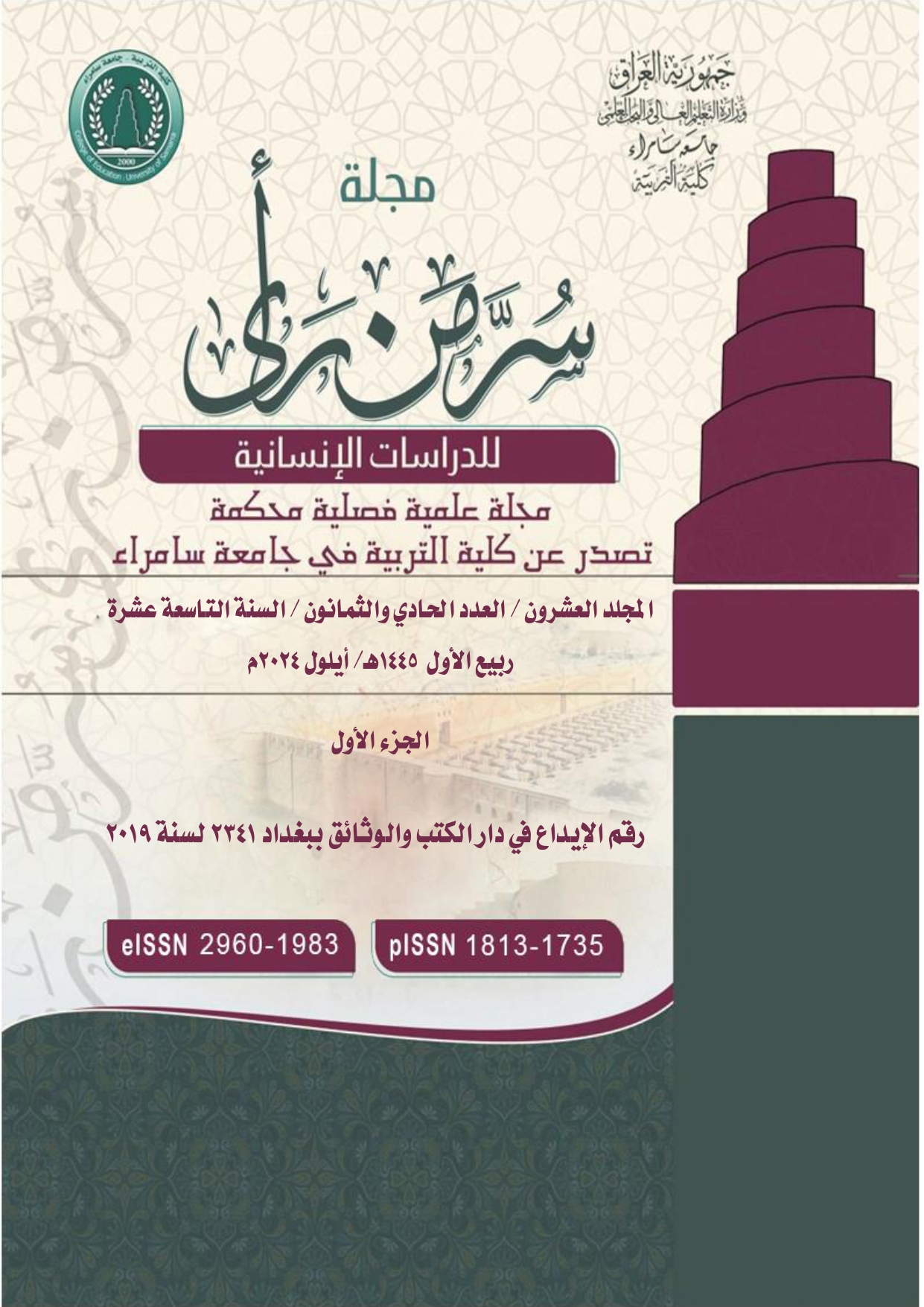Abstract
As the structure of the argumentative discourse is generally an inferential structure, the study started from the core of this concept, stopping at the manifestations of the grammatical arguments of Ibn Hisham Al-Ansari in the exhibition of his grammatical directives in five issues in Arabic grammar. He is on the travel wing. So famous phrases were formed on the public tongues, and the dispute occurred in directing them to the accusative, represented by the face of the accusative in (in preference), (language), (contrary to), (also), and (come on). So, the extrapolation of the visual and Kufic opinions, and Ibn Hisham’s giving of his directives, coupled with arguments in every place, was possible in several ways, as a proof of the Holy Qur’an, or the noble hadith, or Arabic poetry at times, and inferring the rationality of his directions at other times. Logical comprehension of the point of contention, understanding its aspects, investing in the moral dimensions and politics in order to prove the argument, and oblige the counterpart with evidence and proofs within the framework of both textual and rational reasoning, which constitutes one of the axioms of the research that flows into two truths, the first of which is: that Arabic grammar originated with the same argumentative instinct. Secondly, the theorization of the grammatical term of the argumentation according to the linguistic perspective derives its richness from both the linguistic and grammatical inheritance.
The argumentation was the product of terms related to its concept and contexts, so the dispute, controversy, proof, inference, and logic had roots that shaped the essence of the argumentations, in light of the influencing relationship between grammar and logic.

